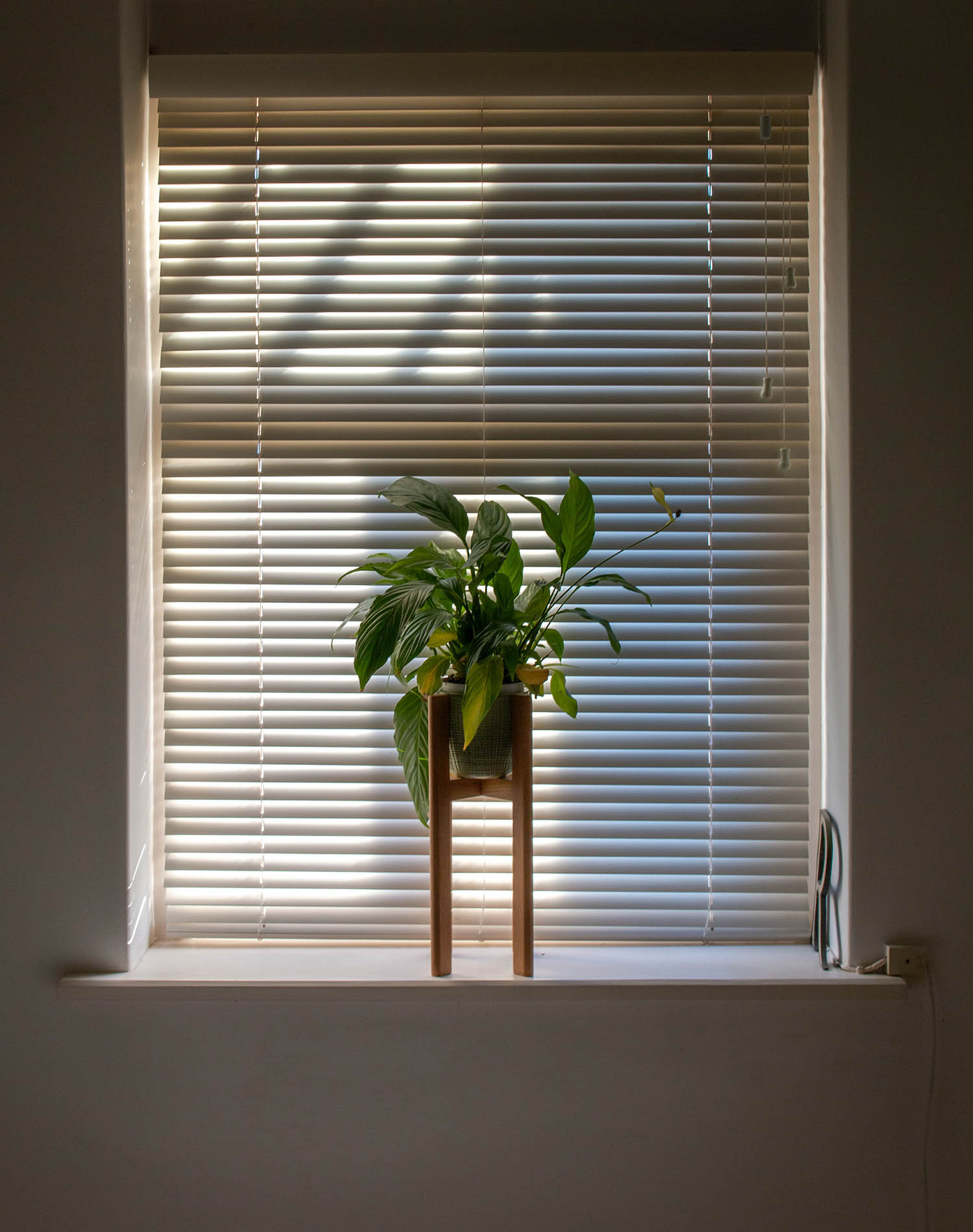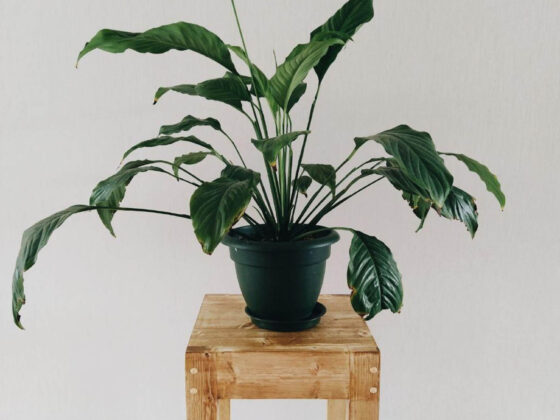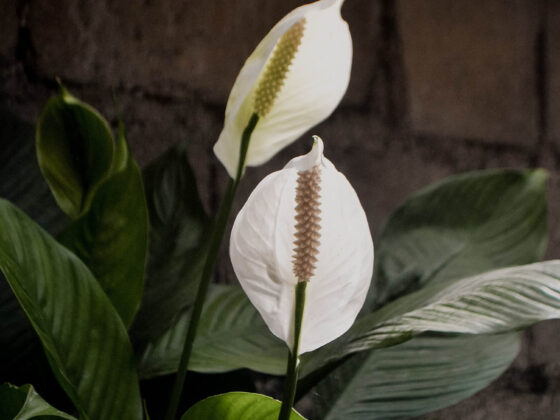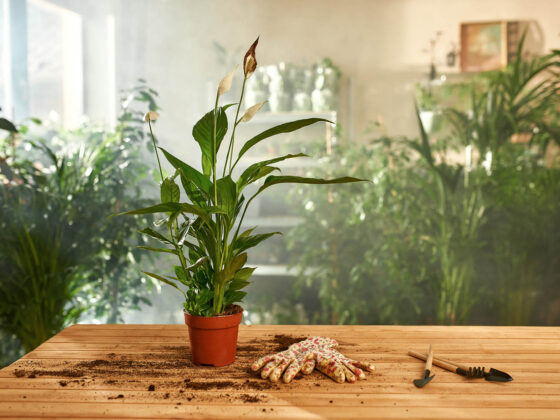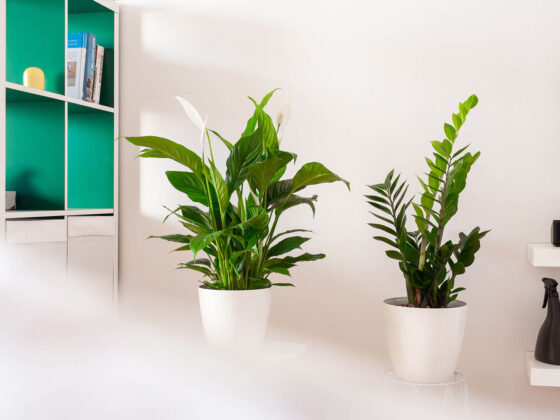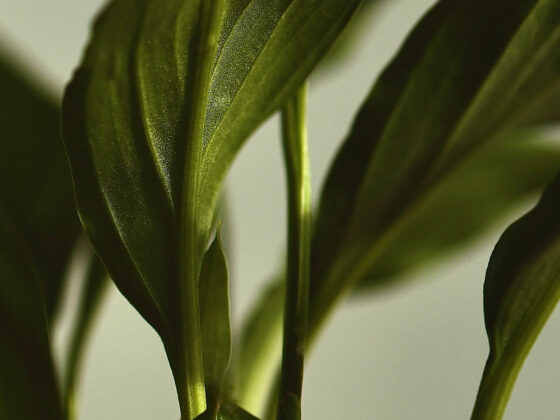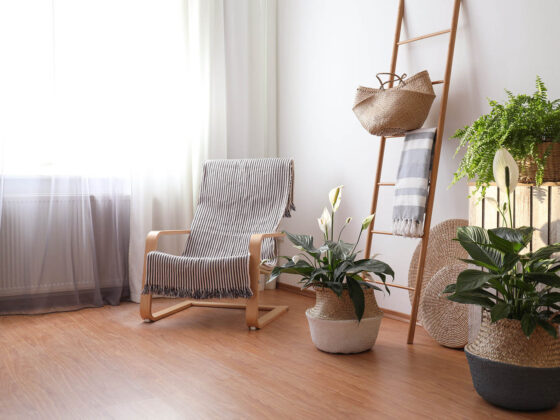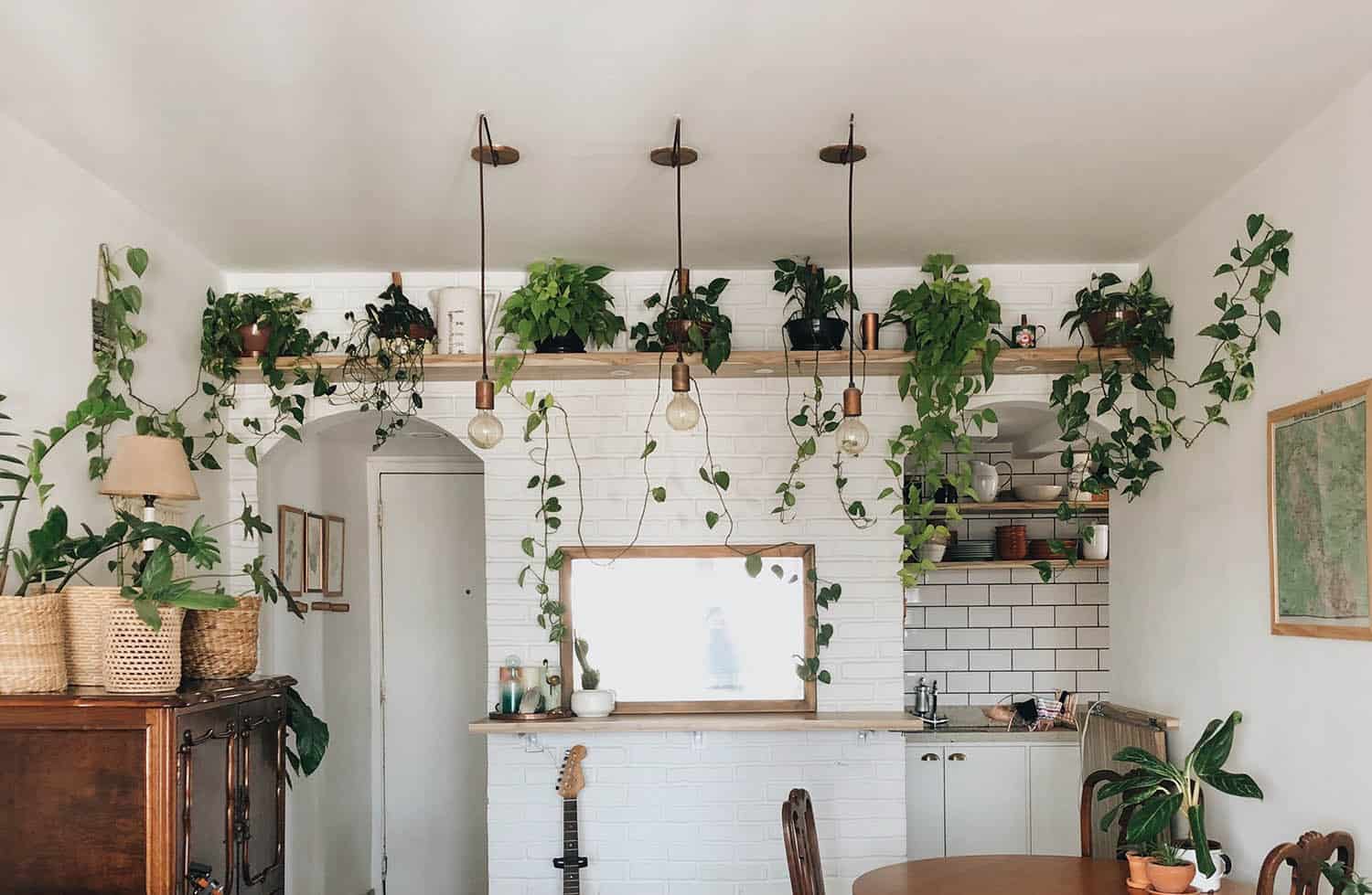Location counts for almost as much in houseplant care as it does in real estate. It’s crucial to know where your Peace Lily will get the sunlight it needs to thrive and grow. In this article, we’ll explain what kind of lighting is best for a Peace Lily and give you some helpful pointers on where to place it. We’ll also dispel some misconceptions about what conditions these plants prefer.
The best light for Peace Lilies is indirect sunlight of moderate to bright strength. The leaves can burn when the sun shines right on them, so keep your plant away from spots with scorching sun. But if you place it somewhere too dark, you’ll stunt your Peace Lily’s growth and miss out on its gorgeous blooms.
You can reduce the risk of sunburnt leaves by putting up sheer curtains or keeping your Peace Lily back from the window. Or, if there’s too little natural light, you can boost it with some grow lamps. Keep scrolling for our detailed recommendations on providing your Peace Lily with the light it needs to grow strong.
How Much Light Does a Peace Lily Need?
When Peace Lilies aren’t hanging out in our homes or offices, they’re growing in the lower reaches of lush tropical forests. The light there is bright, but the dense layer of trees overhead scatters the sun’s rays on their way to the ground. That’s what Peace Lilies like best: a healthy dose of dappled sun.
In your plant’s dream home, it would get around 12 hours of indirect light per day. But that doesn’t mean that only people in the tropics can grow Peace Lilies. These plants are good at tolerating lower levels of light. When the daytime hours get short during the winter, your Peace Lily won’t die. It will just put its growth and flowering on hold until the light levels go up again.
Some people notice the Peace Lily’s ability to tough it out in low light and conclude that these plants can grow even in dark spaces like windowless bathrooms. This is taking it a little too far. Like all plants, Peace Lilies live on sunlight, taking in energy through photosynthesis and converting it into the chemical fuel that keeps them going. Without that energy, they can’t replace aging or damaged tissue, let alone produce new growth.
So if the room where your Peace Lily lives gets little to no natural light, your plant may survive for a while, but it won’t be happy. You’ll be missing out on most of its potential for blooms and growth.
The truth is that the more light you give your Peace Lily, the healthier it will be – as long as you avoid letting it get more than 2-3 hours of direct sun exposure.
Direct vs. Indirect Light
Many houseplant owners have trouble grasping what we mean when we recommend bright, indirect light for Peace Lilies. Does sitting right beside a window always count as direct light? Is there indirect light as long as you can see?
Here’s the key difference. Direct light means that the sun is shining straight onto the foliage. If you can squat beside your Peace Lily, look out the window, and see the sun in the sky, the plant is getting direct light. If not, any light coming through is indirect.
A little bit of direct light isn’t deadly to your plant. Peace Lilies can withstand a couple of hours per day with no ill effects. They’ll probably be grateful for the extra energy!
The danger happens if they sit in the sun for too long. Bright light heats your Peace Lily’s foliage and speeds up its metabolism. That means more water vapor than usual is escaping from the stomata – the pores in the surface of its leaves. If the plant loses water faster than it can replace it, the tissues of its leaves can dry out and start to die.
As you might have guessed, this means temperature and humidity also matter. Your Peace Lily has an easier time tolerating direct light if the air is cool and moist, as it would be in its jungle home.
What to Do When Your Peace Lily Gets Too Much Sun
Peace Lily foliage that gets too much direct light will turn brittle, crispy, and brown. The whole leaf doesn’t always fry at once; sometimes you’ll see irregular dead patches amid healthy green tissue.
These symptoms can also indicate problems like dehydration, root rot, or fertilizer burn. But if your Peace Lily has been in a bright area, then you’re most likely looking at a sunburn. This is especially true if the damage is clustered on the sides of the leaves facing the window. Sun scorch marks may also have more of a pale, reddish color than they would in a simple case of dehydration.
When you think your Peace Lily has been sunburned, move it away from all direct light for the next few weeks. Even an hour or two a day of direct sun may be too much for the plant in its fragile condition. Check to see if it needs water, too. Thirst and sun scorch go together like smoke and fire.
You can’t do anything about the dead spots except trim them away. If you do this, make sure you swab your pruning scissors with rubbing alcohol first. Don’t cut off any healthy leaf tissue if you can avoid it.
In time, your Peace Lily will grow new foliage and replace the damaged leaves. When it starts to put out fresh leaves again, you’ll know it’s healthy enough to start transitioning back to its normal spot. This should take around 3-4 weeks during the growing season.
Where to Place Your Peace Lily
There’s a bit of an art to finding the spot where the sun is perfect for your Peace Lily. However, you can get most of the way there by keeping a few basic factors in mind.
Brightness
Wondering if the spot you’ve chosen is bright enough for Peace Lily? Try the shadow test. Hold up a piece of blank white paper, then hold your hand between the paper and the window. (Do this while the sun is at its brightest.) Now Look at the shadow your hand is casting.
Is it…
- Very dark with sharp edges? The light is very bright and might be too direct for your Peace Lily to withstand for long
- Moderately dark with blurry edges? You have bright but indirect light. Perfect.
- Shapeless and faint? This spot might be on the dim side.
For those who prefer precision (or who just like gadgets), a tool called an illuminance meter can tell you exactly how intense the light is. Shoot for between 1,000 and 2,000 foot-candles.
Direction of Exposure
Different sides of the house get different amounts of sun. In the Northern Hemisphere, the sun rises and falls in the southern skies. That means your south-facing windows are usually the brightest. Unless you have tall trees or buildings blocking your view, they generally let in more direct light than your Peace Lily needs.
Western windows get lower levels of direct light, but most of that light comes during the hottest part of the day. This makes them almost as risky for Peace Lilies as south-facing windows.
East windows are just the opposite: they offer a few hours of direct sunlight during the cool of the morning. An eastern exposure will often provide the best light for your Peace Lily.
North-facing windows are safe – they get basically no direct sunlight at all. But that also means they get less light in general. A north-facing room may not be bright enough to let a Peace Lily live its best life.
Distance
The amount of light hitting you drops off quickly as you move away from the window. This is one way to find a balance between the brightness and the risk of sun scorch. Try setting your Peace Lily 5 or 6 feet back from a southern exposure. You’ll keep it out of the direct sunlight while still giving it a good dose of photons.
Most windows let in:
- direct light within 2-3 feet.
- bright, indirect light within 4-5 feet.
- semi-shade within 7-8 feet.
This can vary a little bit based on the size and orientation of the window.
Barriers
The other way to reduce the intensity of the light is to screen it through something partly opaque. Sheer curtains are the simplest option. A loose weave of light fabric such as lace, linen, or chiffon will filter the light for your Peace Lily while still letting Plenty through. With something like this in place, your Peace Lily can do just fine in a south-facing window.
Other good options include Venetian blinds – as long as you leave them only partway open – or a decorative paper screen.
Humidity
One other way to help your Peace Lily stand up to brighter conditions is to keep the air around it humid. These are jungle plants by nature, and they’ll notice a lack of moisture much more quickly than you will. They’re happiest when the ambient humidity is between 60 and 80 percent.
A humidifier is the easiest way to accomplish this. You can also cluster multiple plants together to create a miniature tropical zone, or keep your Peace Lily in a humid room like a kitchen.
Another option is to place the pot in a shallow tray of pebbles with a bit of water in the base. Your Peace Lily will benefit from the extra humidity as the water evaporates. And as long as the rocks keep the container above the waterline, your plant won’t get root rot.
These tricks are helpful, but you should use them in combination with our guidelines about exposure, window distance, and curtains. A little bit of extra humidity won’t keep your Peace Lily safe if you leave it in the blazing sun.
Is Your Peace Lily Getting Enough Light?
Not everyone will pick the perfect location for their Peace LIly on the first try. How can you tell when yours needs to be in a sunnier space?
The first and mildest sign is a lack of growth. A Peace Lily needs light to get bigger. If it’s short on illumination, it slows down or stops growing. Of course, these plants don’t grow like wildfire even at the best of times. But if yours isn’t gaining at least a couple of inches over the course of a growing season, it may be under-lit.
Peace Lilies are also much less likely to flower when conditions are dim. If you’re wondering why you haven’t seen any of those graceful white blooms in a while, it could be due to a lack of sun.
In prolonged low-light conditions, you might notice your Peace Lily getting leggy. The stems of its leaves get long and thin, possibly flopping over to the sides. The foliage may also turn pale. The plant’s overall appearance will be awkward, scraggly, and gangly.
The scientific term for this is etiolation. Your plant thinks that it’s being blocked from the sun by something growing above it, so it’s trying to push past the barrier. But this won’t help if you’ve got it in the shadowy corner of a dark, north-facing room.
Finally, soil that stays damp for more than a few days is a bad sign. You’ll see this when there’s too little sun to let the moisture evaporate quickly. The plant is also slower to absorb water because the low light is suppressing its metabolism. This isn’t just a warning sign of low light – soggy soil can cause root rot, which is a far more deadly problem.
How to Give Your Peace Lily More Light
The answer might seem obvious – just move the plant into a brighter spot. That is the right move, but it’s best not to do it all at once. A Peace Lily can get acclimated to low light, and if you simply plunk it down into a much brighter location, it may burn.
Instead, increase its exposure gradually. Start by putting the plant in a better-lit area for an hour or two each day. Then ramp that up a little bit at a time.
If you’re having a hard time finding a place where your Peace Lily will get enough light, you could give use a grow light to give it more. The best option is usually a full-spectrum LED lamp. This is both energy-efficient and less likely to overheat your plant.
Our favorite is the Sansi 15W LED bulb. You can set it quite close to your Peace Lily without hurting it, which gives the leaves a lot of light to work with.
Since a grow lamp is much less bright than the sun, you’ll need to leave it on for about 12 hours per day if your Peace Lily has no other source of light. If your plant’s room has some natural light but isn’t quite bright enough, 6-7 hours per day under the grow light is probably good. An outlet timer is the simplest way to set your lighting schedule.
Last but not least, remember to turn your Peace Lily every so often. When a plant gets all its light from one side, it will tend to grow in that direction. This can leave it lopsided and wobbly even when it gets plenty of light. Give the pot a ¼ rotation every few days.
Final Thoughts
When Peace Lilies get the right lighting, they can grow into spectacular houseplants with rich foliage and beautiful blossoms. Now that you know your plant’s requirements, you should be well-equipped to provide all the light your Peace Lily needs. Get your plant on track to superstar status today!






